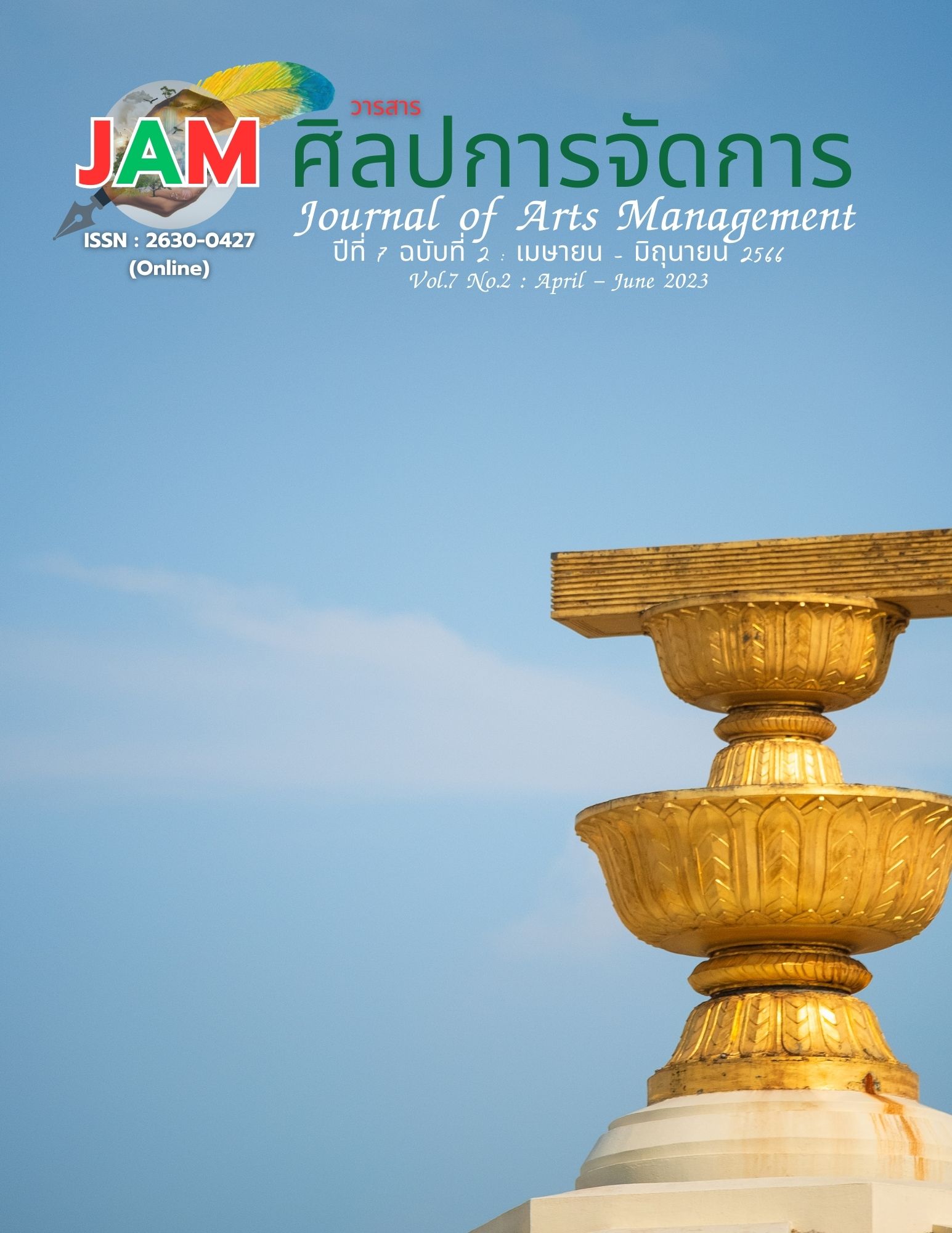The Development of a Training Model for Enhancing the Competency of Garland Maker
Main Article Content
Abstract
The objectives of this research were: 1) to synthesize the professional competencies of garland makers; 2) to develop a training model for improving the professional competencies, and; 3) to study the impact of the training model on the professional competencies. The sample used in the study was 30 garland makers in Bangkok and its vicinity, selected by using the voluntary sampling method. The tools used were: 1) a public assessment form for considering professional competency standards; 2) an opinion assessment form on the competency model; 3) an opinion assessment form on a training set of the professional competencies; and 4) a satisfaction assessment form for the occupational competency trainees. Qualitative and quantitative data analyses were performed in the study. Descriptive statistics, including frequency, percentage, mean, and standard deviation, were used to analyze the data.
The findings indicated that 1) the synthesis results of the professional competencies for the garland makers consisted of 10 units of core competence and 33 units of sub-competence. 2) The results of the study and development of the training model of the professional competencies for the garland makers were as follows: 2.1) Competencies and sub-competences as detailed in the competency-based training module increased core competencies to 10 units and sub-competencies to 33 units. 2.2) The assessment result of the of behavioral objectives of the professional competency curriculum and the assessment result of performance criteria used in the professional competency training were at the appropriate level. 2.3) The assessment result of the training management on the professional competency basis for the garland makers was at the highest level. 3) The training result of the professional competencies for the garland makers showed that 30 trainees met the required criteria. The trainees’ overall level of satisfaction was the highest.
Article Details

This work is licensed under a Creative Commons Attribution-NonCommercial-NoDerivatives 4.0 International License.
Views and opinions appearing in articles in the Journal of Arts of Management It is the responsibility of the author of the article. and does not constitute the view and responsibility of the editorial team I agree that the article is copyright of the Arts and Management Journal.
References
Chanthanaphalin, M. (2009). Beautifully decorated garland. Amarin Printing and Publishing.
Dave, R. H. (1970). Psychomotor levels in developing and writing behavioral objectives. Arizona. Educational Innovators.
Institute of Professional Qualifications (Public Organization). (2014). Professional standards and professional qualifications. professional field of flower arrangement. Textbook Production Center King Mongkut’s University of Technology North Bangkok.
Kaiyawan, Y. (2016). Research and development of training curriculum. Chulalongkorn University.
Kanthanon, S. (2018). Organizing training and seminars. Community Development. Phuket Rajabhat University.
Khawlueang, D. (2011). Effective Training and Performance. Journal of Education and Social Development, 7(1), 18-32.
Harrow, A. (1972). A taxonomy of psychomotor domain: a guide for developing behavioral objectives. David McKay.
Mingkaew, S., & Hiransomboon, K. (2021). Success Factors of Fresh Flower Garland Sales Business in the Central Region. Journal of KMITL Business School, 11(1), 52–66.
Office of the National Economic and Social Development Council. (2023, March 1). National Economic and Social Development Plan, No. 13, 2023-2027. https://www.nesdc.go.th/download/Plan13/Doc/Plan13_Final.pdf
Office of the Secretariat of the Council of Education. (2021). National Qualifications Framework Implementation Plan, 2019–2022. Prikwan Graphic.
Pathumlangkar, S. (2009). Knowledge of competency-based curriculum and evaluation. Newspaper: Vocational Education and Career Standards, January 2009, 1-11.
Phanrattanachai, K., & Wiriyanon, T. (2021). The Development of Training Model for Occupational Competency of Telecommunications. Journal of Humanities and Social Sciences Nakhon Phanom University, 11(1), 116-128.
Posttoday (2023, February 1). Farmers in Korat Hey! Get money for unlimited sales of jasmine flowers on Mother’s Day, earning more than 37 thousand baht per day. https://www.posttoday.com/politics/239620
Regulations of the Institute of Professional Qualifications (Public Organization) on criteria, methods and conditions for granting professional qualifications, 2014. (2014, 28 February). Royal Gazette. Vol. 131. Special chapter 40G. 21-40.
Sawat, R., & Buosonte R. (2022). Competency–Based Education: CBE. Journal of Liberal Art of Rajamangala University of Technology Suvarnabhumi, 4(1), 187-201.
Simpson, E. J. (1972). The classification of educational objectives in the psychomotor domain. Washington DC. Gryphon House.
Sorot, A. (2005). The art of Thai flower arrangement. Odeon Store.
Srisa-ard, B. (2017). Preliminary research (10th ed.). Suwiriyasan.
Suthinarakorn, W., Abdulsta, P., & Satthinarakorn, S. (2021) Competency-Based Curriculum Development and Meaningful Learning Management. Siamparitut.
Suwanmalee, C. (1990). Malai. Odeon Store.


